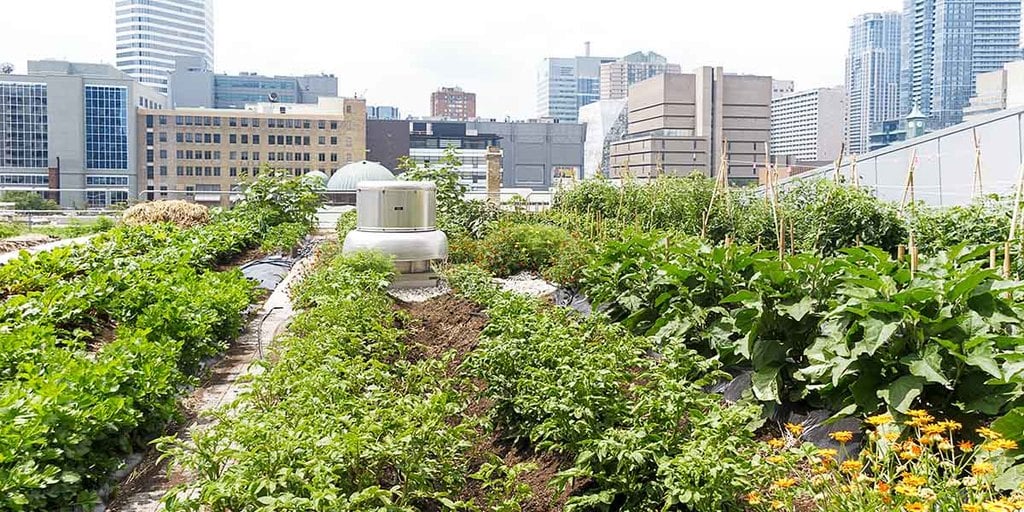The Best Strategy To Use For City Blooming
The Best Strategy To Use For City Blooming
Blog Article
Unknown Facts About City Blooming
Table of ContentsCity Blooming Things To Know Before You Get ThisThe Facts About City Blooming RevealedThe 7-Minute Rule for City BloomingThe Best Strategy To Use For City Blooming10 Easy Facts About City Blooming Described

As you walk the streets of the Bronx, Southside Chicago or East Oakland, you may see have even seen big stories of ripening fruits and veggies being harvested. What precisely are city farms and community yards? Urban farming, city farming, or city horticulture is the method of cultivating, handling and distributing food in or around city areas.
Normally, metropolitan farming as a practice is a larger financial investment than horticulture. There are plenty of extra hours spent into the minutiae of farming, from the plant plan to the tending of your beds. This time dedication tackles a whole brand-new definition once you recognize the objective that is being functioned in the direction of and dedicated, particularly that of obtaining a bountiful yield of plants to be taken in.
A neighborhood garden is a solitary tract gardened jointly by a team of individuals. Area yards utilize either specific or shared plots on personal or public land while generating fruit, vegetables, and/or plants grown for their eye-catching look. The basic version below is that a large team of individuals each contribute a reasonably little quantity of time to working their very own story, and get the fruits of their labor therefore.
Indicators on City Blooming You Should Know

, and community companies by assisting them develop and expand their very own yards. The distinctions in between neighborhood yard and urban ranch are nuanced, though in the end the very same fundamental task takes placefood crop cultivation however within different business structures - home and garden.
Urban ranches are generally extra organization and modern technology oriented, with the main function of making the most of returns and marketing produce. Commercial urban ranches are typically intended at broadening manufacturing on typically small land location with technologies in modern technologies such as aquaculture, hydroponics, and greenhouses and may partner with an industrial cooking area to create locally-produced value-added products such as jams and sauces.
Get This Report on City Blooming
The produce is normally grown on a much smaller sized scale and is taken home to consume at home or to share. By supplying much required environment-friendly spaces in destitute, concrete metropolitan areas, they permit for use this link the advantages of yard gardening to those doing not have backyards, and serve as superb examples of self-organization and neighborhood advocacy.
Some community yards, commonly in city locations, move right into expanding for industrial use while some metropolitan farms open up their land for more socially mindful advantages. Regardless of how you specify and differentiate the two, they are both favorable forces for excellent in cities around America and the world.
As all of Tiny Axe Peppers' warm sauces are sourced with peppers from community yards, your purchases directly aid fund these local projects (https://www.dreamstime.com/danielnold94107_info). Take component in the transformation by.
A close friend of mine recently commented in a discussion about horticulture that "It's interesting, I have actually always believed that farming as a method is somewhat like gardening. As I spent even more and more time in my Urban Farming course I have actually come to recognize that to say that gardening is a small extension of agriculture would be a bit of stretch.
City Blooming for Dummies
They both focus on the treatment of plants for some objective that can be sustenance, profit or simply the enjoyment of the craft. They both require a monetary financial investment on top of a time financial investment, something that a lot of people in our fast paced life do not have a whole lot of.
We can see that the resemblances are abundant, however are the differences sufficient to create a distinction? As a pupil at NYU I have the chance to deal with the leave It Much better Structure, a team that teaches basic nutrition and gardening to high institution trainees. https://www.tumblr.com/cityblooming1/754396373643853824/welcome-to-our-website-city-blooming-is-all-about?source=share. This experience provided me an extensive venture right into the world of amateur gardening past what lots of people have touched with
With these in hand, I can securely state that these 2 tasks are quite honestly various monsters. Farming as a method is a larger financial investment than horticulture. There are countless a lot more hours spent right into the minutiae of farming, from the crop plan to the often tending of your beds. This moment dedication takes on a whole brand-new meaning once you realize the objective that is being worked towards and committed, particularly that of gaining a bountiful yield of crops to be consumed.
The typical garden enthusiast tackles his tasks as a task instead than a requirement and as such differentiates his or herself from the farmer. With this distinction in hand, they are both calming and soothing exercises that anyone can choose up, which by itself ought to be an advertisement for both.
Facts About City Blooming Uncovered
Something failed - sustainability. Wait a minute and try once again Try again
Report this page